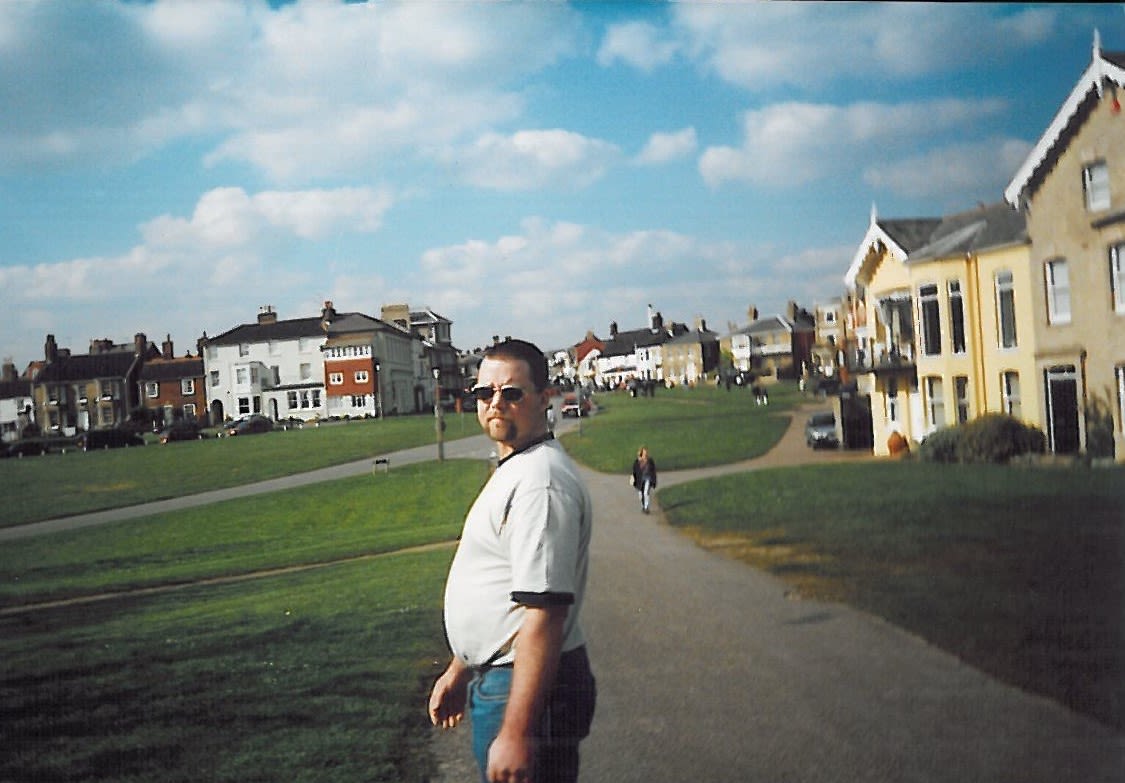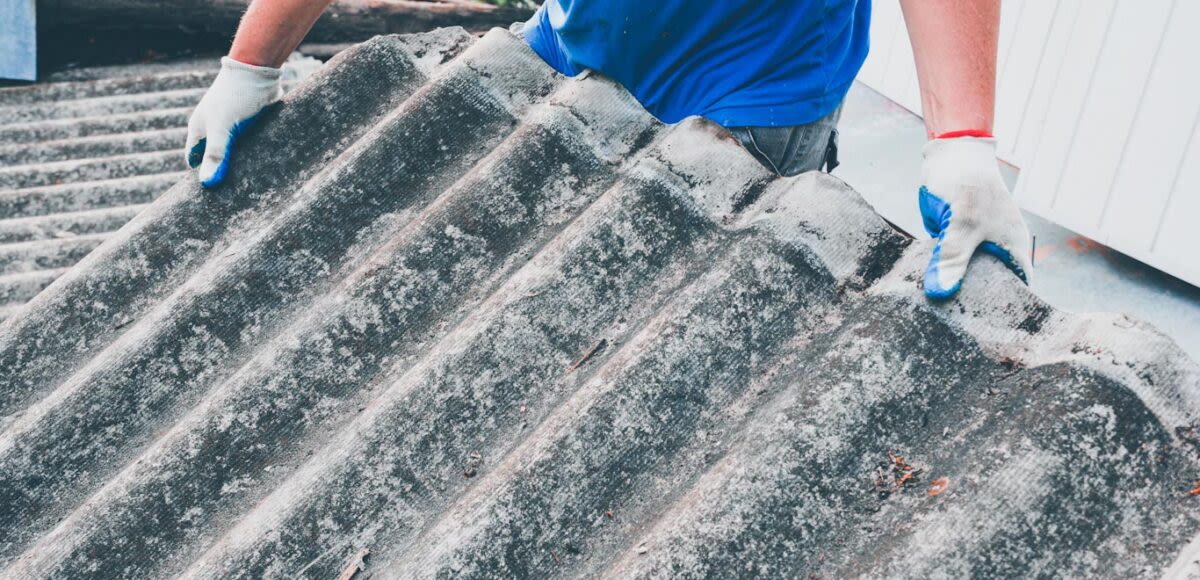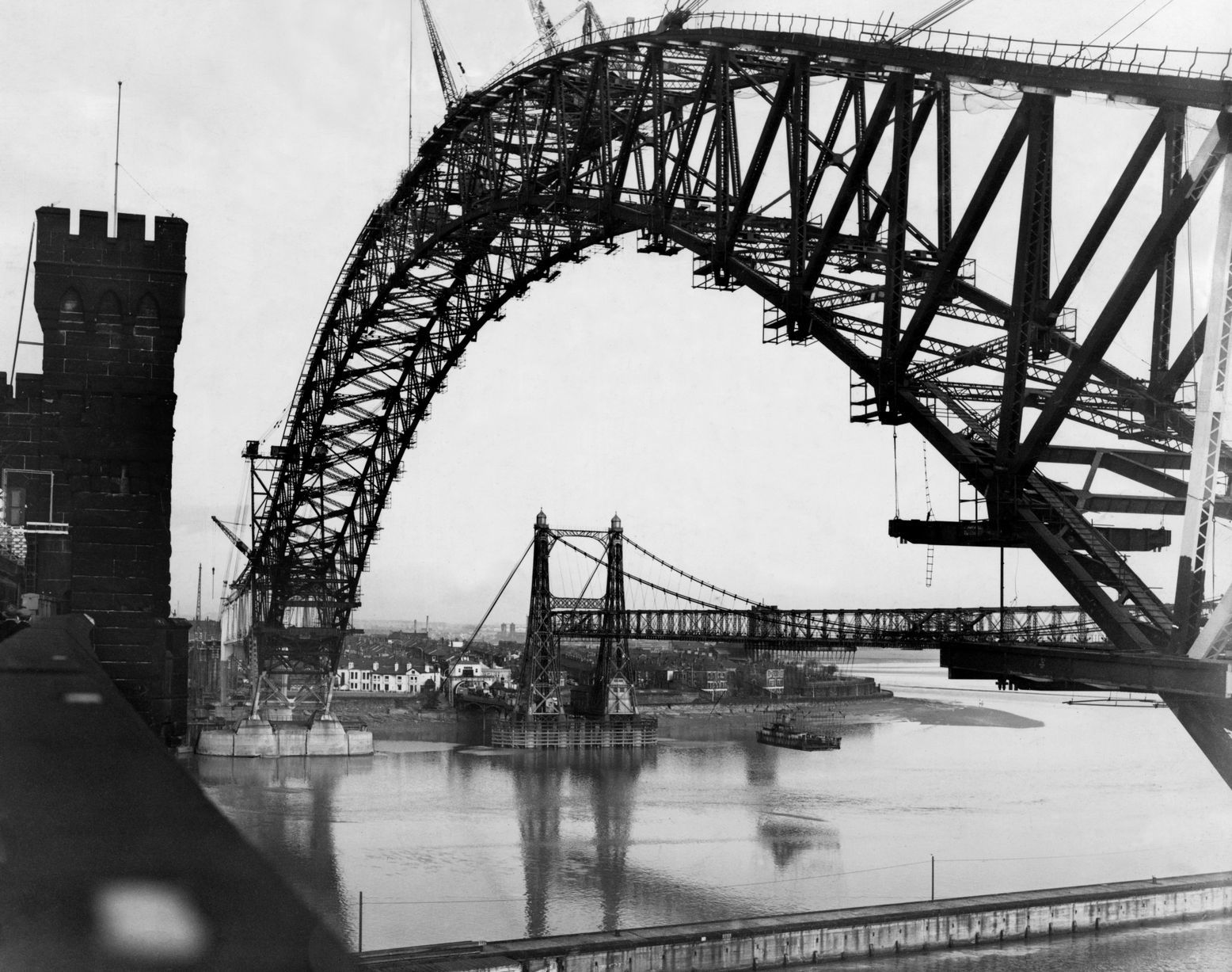Some of our recent settlements...

Compensation recovered for family of 43-year-old nan who died from mesothelioma after exposure to asbestos in 2001

Kieran Mallen began experiencing symptoms of shortness of breath and shoulder pain in March 2016, aged just 42. His symptoms continued and in May 2016 he was admitted to A&E. On admission to hospital, it was discovered that he had a pleural effusion in one of his lungs. The fluid was drained and tested but did not reveal a malignancy. Kieran’s condition continued to deteriorate. His doctors suspected that he had mesothelioma, but he sadly died before it could be confirmed.
Following Kieran’s death, a post mortem examination was carried out which revealed mesothelioma. Kieran’s partner contacted a firm of specialist asbestos disease solicitors but whilst they assisted her with applications for government benefits she was entitled to due to Kieran’s premature death, they advised they could not assist with a legal claim for compensation as there was not enough evidence to prove how Kieran had been exposed to asbestos.
Kieran had subcontracted for Chameleon Refurbishments, a company that refurbished restaurants for a well-known chain in London. He didn’t start working for them until 1999 – the year asbestos was banned. Kieran had been so poorly that he had been unable to give much information prior to his death but when his consultant had told him that he may have a cancer due to asbestos, Kieran told his partner about a job he did on a restaurant at Exmouth Market where asbestos had been found. Kieran was involved in stripping out the premises and refurbishing them. During this time, asbestos was discovered. Kieran reported it to his boss but told his partner that he had been told to carry on with the work until an asbestos removal company was brought in.
Kieran’s partner Debbie came to us and sought a second opinion from Jennifer Seavor about whether a legal claim might be possible. Jennifer took a detailed statement from Debbie regarding her recollections of conversations she had with Kieran about his exposure. Debbie was also able to provide some names of colleagues who had worked with Kieran at Chameleon Refurbishments. We were able to trace some of these witnesses who were able to provide statements. Frustratingly most of the witnesses came on to the jobs later in the contract once the gutting and demolition work had been done. Others only started working for the company years later, when the work the company did became more cosmetic in nature rather than full-scale demolition and refurbishment.
There was an added complexity because Kieran hadn’t been employed by Chameleon Refurbishments at the time it was alleged, he had come into contact with asbestos. He had been employed by the company at a later date but there was no evidence to suggest he had been exposed to asbestos during that later period.
A letter of claim was sent to the insurers of the company, as the company had since dissolved. We contended that Kieran had effectively been an employee during the first period of work when it was alleged, he had been exposed to asbestos as the nature of the relationship between him and the company was the same as when he later became employed formally. Medical evidence was also obtained to link Kieran’s alleged exposure with the development of his mesothelioma.
Our team continued to carry out extensive investigations into the premises at Exmouth Market to obtain documents relating to the building including possible asbestos surveys. Other jobs Kieran did were considered too. Meanwhile, further efforts were made to contact and take statements from colleagues who had worked with Kieran at the time. One witness provided crucial evidence. He was an independent contractor but told us about the sites and how asbestos was often found. Other witnesses told us that health and safety was not very good and that jobs were always time-pressured meaning corners were cut.
While we continued to gather evidence, court proceedings were issued, and Chameleon Refurbishments was restored to the Register of Companies so proceedings could be served.
The company did not admit liability. They served witness evidence of their own – statements from three of the former directors of the company who contended that health and safety practices were followed, and that Kieran would not have been exposed to asbestos as alleged.
The Company also obtained a medical report from an expert of their own who called into question whether radiotherapy treatment which Kieran had received when he was young for non-Hodgkin’s lymphoma may have caused his mesothelioma. However, Kieran also had pleural plaques – scars on the lining of the lungs, which can only be caused by asbestos. In light of this, the medical experts eventually agreed that on the balance of probabilities Kieran’s mesothelioma had been caused by asbestos exposure.
An offer of settlement was made to the Defendant and at the same time we put forward a formal request for further information under the Civil Procedure Rules to the Defendants' witnesses to question them as to the contents of their statements. This put pressure on the Defendant and they eventually decided to enter into negotiations regarding settlement and the claim settled for a six-figure sum.
Jennifer said: "Kieran’s case is tragic. He was only 43 when he lost his life to mesothelioma. His partner approached me after being told by another solicitor that there was not enough evidence to pursue a claim. Kieran was exposed to asbestos when the dangers of exposure were well-known and following the ban of the use of asbestos in this country. Kieran should have been protected at work, but he was not. My team has spent several years trying to trace witnesses and locate historic documents to build a case against the Company he worked for. Sadly, the claim cannot bring Kieran back but I am pleased we have been able to hold the Company to account and recover compensation for his partner and family. Kieran's story shows how people are being exposed to asbestos even now. Whilst asbestos remains in buildings the risk remains."
At the end of the claim Kieran's partner Debbie said: “I cannot recommend RWK enough. They have worked tirelessly with a belief that there would be a positive outcome on my case. My solicitor, Jennifer, is so knowledgeable and passionate about issues surrounding my case, she also taught me a lot. RWK Goodman are compassionate and professional.”

Jennifer Seavor
Partner, RWK Goodman

Compensation recovered for former joiner diagnosed with diffuse pleural thickening
John was diagnosed with diffuse pleural thickening in 2018. Following his diagnosis, he contacted our specialist asbestos diseases solicitor, Jennifer Seavor.
John could recall being exposed to asbestos whilst working as a joiner for two different employers. He worked for W V Patrick (Builders) Limited between 1974/75 and 1975/76, on a number of difference contracts. John could recall working on the refurbishment of an old telephone exchange. The job involved completely stripping out the building and all the telecommunication fittings. Lots of old insulation and cladding, which contained asbestos, was removed, creating clouds of dust. Labourers swept up the dust around him, which was not dampened down first. John was not provided with any breathing protection or warned about the dangers of working with asbestos.
In around 1976/77, John worked for John Laing Construction Co Limited (now John Laing Limited). John worked for the company on a contract at Keighley Girls Grammar School and was tasked with hanging fire doors. He was working alongside plumbing and heating engineers who were carrying out repairs and maintenance to pipework. The pipework was lagged with asbestos, which had to be removed for the repairs to be carried out. This created lots of dust in the air around John.
Jennifer took a detailed witness statement from John regarding his exposure. Steps were then undertaken to obtain evidence for the claim, including a report from a medical expert to confirm John’s diagnosis. A brief report was also obtained from an engineer regarding the likely level of asbestos exposure to which John was exposed and the division between the two companies.
Letters of claim were sent to the two defendants and their insurers identified. It was necessary to start court proceedings in 2020 as the Defendants raised an issue with limitation (i.e., the time limit for bringing the claim), as John had been diagnosed with pleural thickening in 2013. He had sought advice regarding pursuing a legal claim at the time but was told his condition was not significant enough. He did however receive some Government benefits at that time. The Defendants therefore contended his claim was out of time. However, after further negotiations the Defendants conceded the point, and the claim settled for £50,000.

Jennifer Seavor
Partner, RWK Goodman

Photo by Callum Hill on Unsplash
£495,000 for Mechanical Engineer exposed to Asbestos by MOD
Mr G was diagnosed with pleural mesothelioma in December 2020 having been exposed to asbestos whilst working for the MOD as an apprentice mechanical engineer in Portsmouth Dockyard in the 1950s and 1960s. He was heavily exposed to asbestos whilst working on the construction of Royal Navy ships.
Although liability was conceded shortly after the service of court proceedings and an interim payment made, the case was very complex because Mr G was the primary carer for his wife who had considerable disabilities. Mr G wanted to settle his claim in his lifetime but doing so would usually mean not being able to recover for Mrs G’s dependency on Mr G in to the future which can usually only be claimed after death.
Nevertheless, Mrs G’s reliance upon her husband for services past the date of his eventual death was pleaded within the claim, including her increasing need for care over time due to a deteriorating spinal and arthritic condition.
Mr G was also a strong candidate for immunotherapy treatment, as he had already completed first line chemotherapy treatment. His future private medical treatment costs were recovered on the basis that the MOD would pay for all of his future medical treatment, for as long as he required it, as long as it was deemed reasonable by his treating consultant. These costs were paid in addition to his damages.
Since settlement of his claim, Mr G has commenced immunotherapy treatment and is now on his 4th round with all of associated costs being paid by the MOD for the duration of his lifetime.
Mr G said of RKW Goodman: “The company made a point of making personal contact. I felt part of the team and could contact anybody at any time. The legal procedure was long and complicated requiring detailed technical statements from at least 6 of the top specialists in the country and finally briefing counsel. The total time of this process from my first contact to the deposition of the sealed consent order took only 9 months but this hides the fact that interim and final payments were made well within this period. I feel it is a privilege and an obligation to recommend this company for anyone following a similar journey to my own and I and my family will always be very grateful to the entire team.”

Rachel James
Partner, RWK Goodman

Photo by Philip Waern on Unsplash
Daughter of former steel erector successfully recovers compensation from his former employers
Terence Burns, from Widnes, died in November 2020 and a post-mortem confirmed the cause of death as malignant mesothelioma due to asbestos exposure. His daughter, Kate Edgar, instructed our Senior Associate, Laura Wilkinson, to investigate a compensation claim against his former employers.
Terence had worked for over 20 companies throughout his 40-year career, which was sadly cut short by an industrial injury in 1986. One of his proudest moments was when, aged 29 in November 1960, he became the first person to cross the new Runcorn-Widnes bridge, which has since been renamed the Silver Jubilee Bridge. As a steel erector, he jumped across a 2ft gap to guide the final steel girder into position on the Runcorn side of the River Mersey. This exploit earned him the accolade of Spider-Man and his “daring leap” 280ft above the river made a splash in many of the national newspapers at the time!
Terence later worked as a steel erector for Fleming Brothers (Structural Engineers) Limited between 1964 and 1982 and for Petricon Structures Limited between 1984 and 1988. The companies were contracted to sites owned by Imperial Chemical Industries Limited (“ICI”), namely Castner Kellner, Rocksavage and Pilkington Sullivan.
As we were only instructed to investigate a claim after Terence’s death, we were unable to obtain a witness statement from him outlining the detail of his asbestos exposure. We did, however, obtain a witness statement from Terence’s son who worked alongside him in the same role at the ICI sites. Furthermore, we ran an appeal for witnesses on Facebook, which located a crane operator who worked with Terence at the ICI sites and who, like Terence, was sub-contracted to Petricon Structures Limited. He was able to provide us with a witness statement detailing Terence’s asbestos exposure whilst dismantling old steelwork and pipework, which included knocking off old asbestos lagging.
We also obtained a medical report from an independent respiratory consultant who confirmed that Terence’s asbestos exposure whilst working at the ICI sites materially increased the risk of him developing mesothelioma. He confirmed that Terence had no pre-existing medical conditions that would have impacted his life expectancy but for the mesothelioma and that the mesothelioma reduced his life expectancy by 4.4 years.
The claim settled against the companies’ insurers in a six-figure sum without the need to issue Court proceedings.
Laura Wilkinson, who represented Kate, said: “Sadly, Terence’s story is not an unfamiliar one for those who worked at ICI sites and other heavily industrialised areas up to the 1980s. Asbestos was widely used as an insulation material in many shapes and forms and was installed, interfered with and removed, which released asbestos dust and fibres to which countless workers were exposed. Kate’s claim on behalf of Terence’s Estate was successful against the two above-named companies that employed him at the ICI sites and has brought some justice to his family.”
Terence started experiencing pain on the left side of his upper body and in his stomach in early 2020. He underwent a chest x-ray and CT scan and a build-up of fluid was found on his left lung. A pleural drain removed 1600ml of fluid and he was later fitted with an Indwelling Pleural Catheter to remove further build-ups over the following few months.
Terence’s condition deteriorated from October and he sadly died on 3 November 2020, less than 7 months after his diagnosis.
At the time of his death, Terence was widowed having lost his wife, Joan, in December 2010 after 55 years of marriage. He lived with two of their 7 children, James and Thomas.
Kate said, “Before his diagnosis, dad had been active despite his age. He was a practising Catholic and went to church once a week and ran a local prayer group. He enjoyed spending time with his granddaughter, Alex, who took him on shopping trips, to flea markets and museums. They also enjoyed going on holiday together and went to Malta in February 2020 shortly after dad started experiencing symptoms due to the mesothelioma.
When we saw dad – an independent person with a strong, adventurous spirit - struggling with pains in his side, we knew instinctively that something was wrong. However, dad’s diagnosis with mesothelioma still came as an incredible shock to me and the rest of the family. He managed at home with the support of his family until the October when his condition began to deteriorate rapidly, and he was soon needing around-the-clock care. This latter stage was quite heart-breaking for the family, as dad had always been a physically robust and self-sufficient man. A year and a half has passed since losing dad and we all miss him terribly.”
Kate said of RWK Goodman: “More than excellent - their practice operates to very high standards, and I was always treated with warmth and courtesy. It was clear from the outset that I was with the ‘right’ firm. This belief was consolidated as the in-depth expertise, skilful drafting of documents and clear concise advice from Laura Wilkinson (the Senior Associate dealing with my case) was evident throughout the process. I would heartily recommend their services.”

Laura Wilkinson
Senior Associate, RWK Goodman

Out of time claim settles on eve of the trial
Mr C was diagnosed with mesothelioma in the autumn of 2010 when he was aged 71 and his wife Mrs C was 70. He had worked for Babcock and Wilcox (boiler manufacturers) as a service engineer in the 1960’s with extensive exposure to asbestos in power stations and other industrial locations. He remained with B&W for the rest of his career. When he was diagnosed the couple’s eldest daughter was very unwell with a brain tumour. She died early in 2011, leaving behind 2 young children.
After Mr C died in January 2012 Mrs C consulted solicitors but felt overwhelmed and unable to continue with the claim at that stage. The family’s other daughter then developed MS. Late in 2019 Mrs C consulted Helen Childs. Bespoke insurance was needed because of the limitation issue. The claim was issued in early 2020 and proceeded towards a trial on limitation as a preliminary issue. Considerable evidence of previous claims against the same defendants was produced, and they were unable to identify any prejudice in investigating the claim in 2019/20 as opposed to 2010/15. However they argued that the unless Mrs C had lacked capacity the court should not exercise its discretion to extend the usual 3 year time limit, which is a misunderstanding of the factors the court should take into account.
The normal time limit for bringing a claim for mesothelioma is usually 3 years from the date of death. However the court has discretion to extend the time limit. The question of whether or not it is likely to exercise that discretion usually boils down to whether or not the defendants are likely to find it more difficult to investigate the claim later than they would have done if it had been brought in time. Despite the evidence of many similar claims being sued by these defendants, including one for a man who worked as a service engineer at the same power station as Mr C just 6 months earlier, solicitors for B & W refused to make any concessions or offers at all until just a couple of days before the trial when a barrister was instructed.
The settlement of her claim meant that Mrs C could help provide for her daughter who had MS, and be confident she could stay in the home she and her husband had lived in for many years. The claim only settled on the very eve of the trial.

Helen Childs
Partner, RWK Goodman

Photo by American Public Power Association on Unsplash
Mesothelioma claim which another firm turned down settles
Mr A sadly died of mesothelioma in 2018. He had worked in the building trade in the 1960s, but deteriorated so quickly after his diagnosis that no lifetime statement was obtained. His family instructed another specialist firm of solicitors, but after that firm turned down the case on the basis that there was insufficient evidence of occupational exposure, they approached us, and Sarah Wolf took over. Having undertaken extensive and painstaking research, we were able to produce evidence from family members, and a former colleague.
The case was complicated by the fact that Mr A and his wife lived separately, but they had never divorced. We obtained compelling evidence that they remained close, and that she continued to rely on his income and services and had cared for him during his illness, despite her own poor health. Court proceedings were commenced, shortly after which the claim was settled for a sufficiently high amount that Mr A’s widow could be sure that her own future care needs would be met.
The case highlights how thorough investigations can lead to successful outcomes, even when there is no direct evidence from the person with mesothelioma. Upon its conclusion, Mr A’s daughter commented that our help and patience had been very consoling, and that she hoped the result would give others courage to pursue claims on behalf of loved ones who might not have had the chance to fight for themselves.

Sarah Wolf
Partner, RWK Goodman

Photo by Henry & Co. on Unsplash



